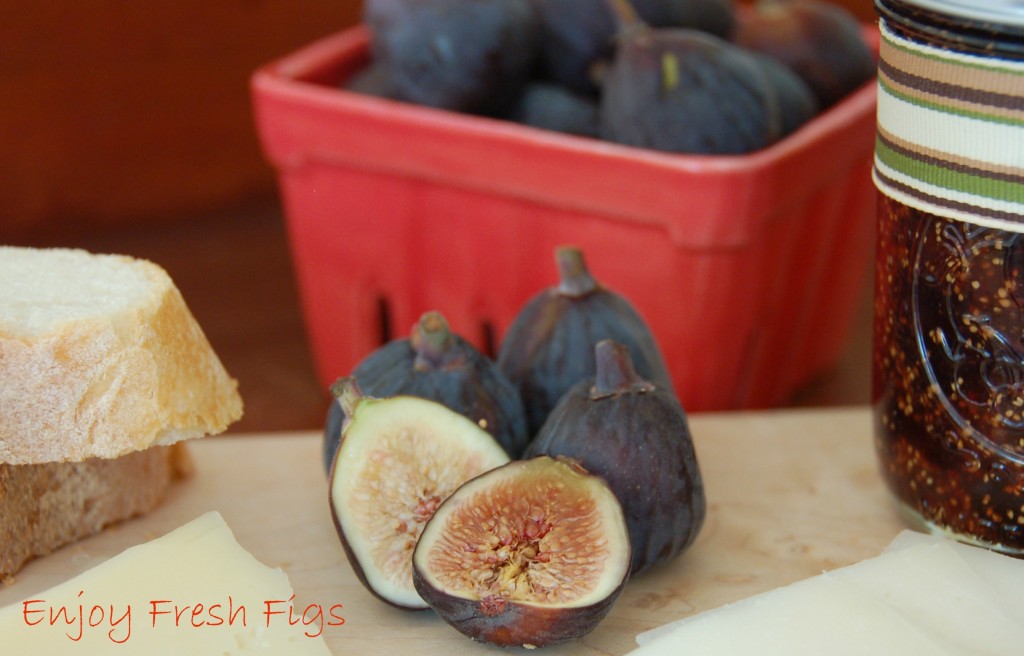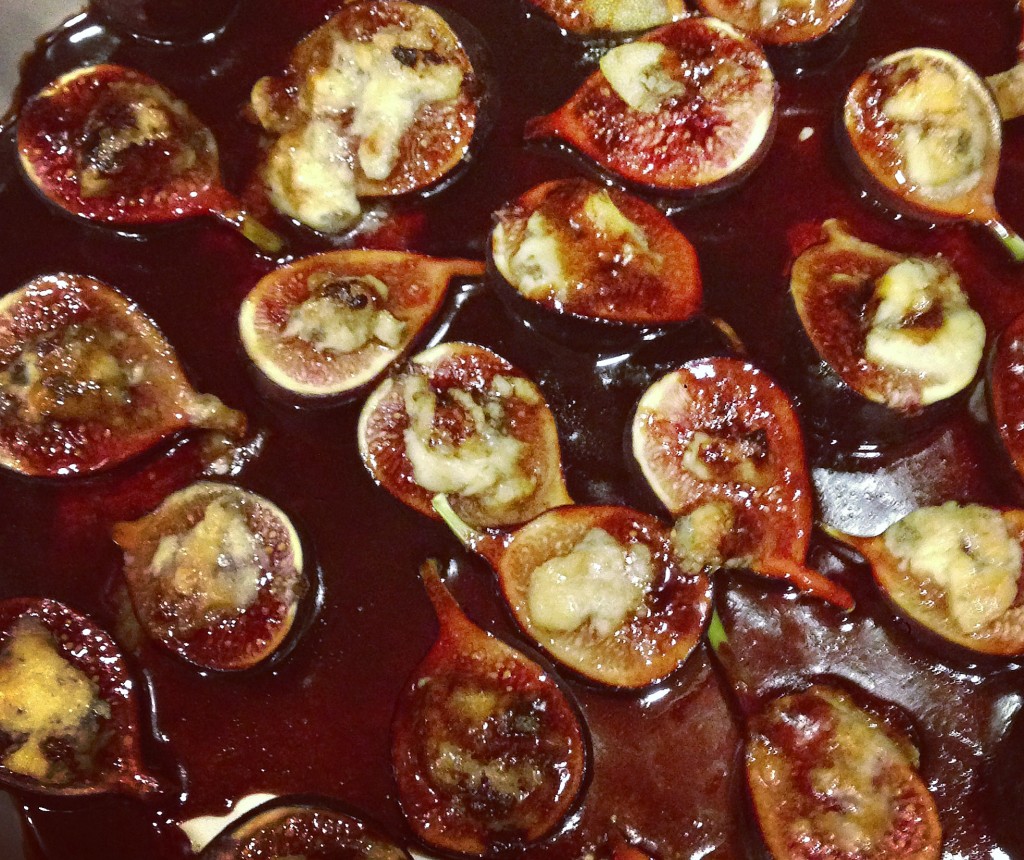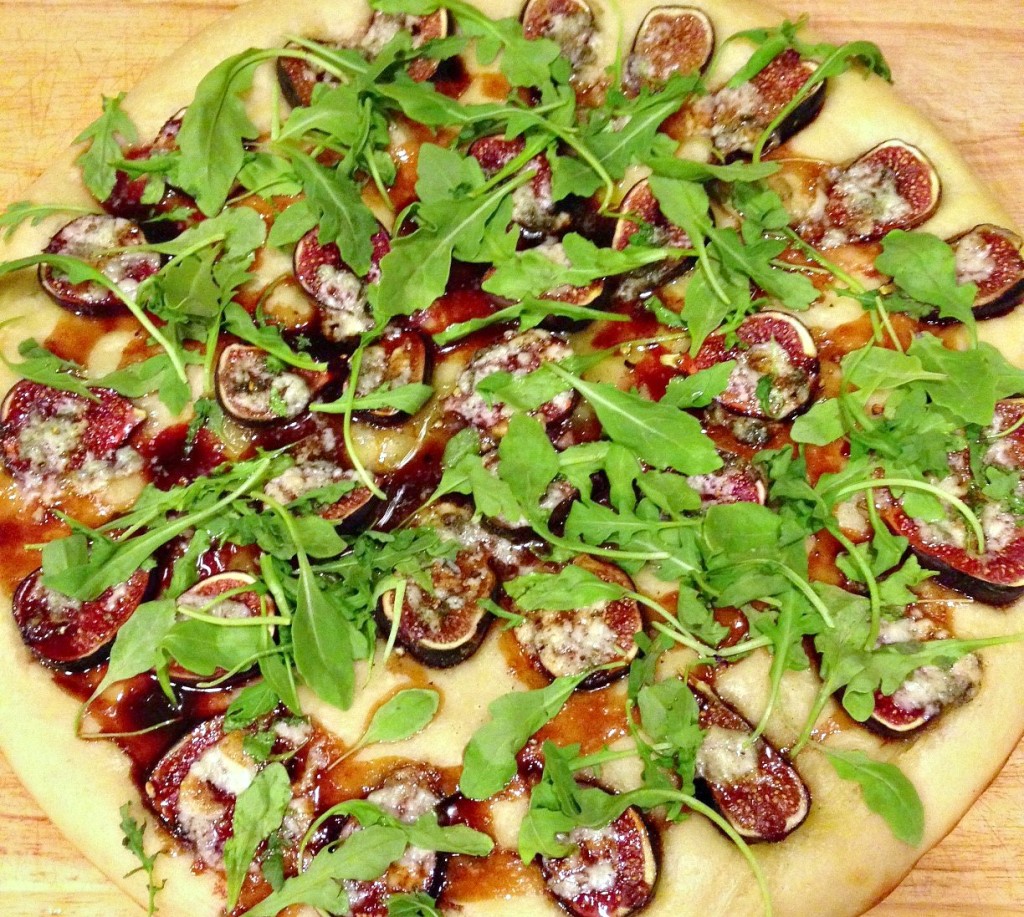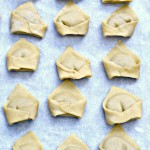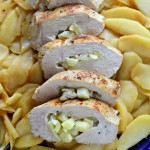Have you noticed fresh figs for sale at your grocery store lately? While dried figs are available all year long, fresh figs are truly a seasonal delight — available only for a few months in the late summer and fall. While these beauties are here, I have been snapping them up and adding them to salads, flatbreads and cheese plates. I even tried my hand at fig jam for the first time using the recipe from the Food in Jars cookbook. Now I never want to eat cheese without fig jam again.
When you see figs in the grocery store, they are most commonly the deep purple ones. These are Black Mission figs. With their jewel-like exterior and pale, rosy interior, Black Mission figs are the beauty queens of the fig world. They are characterized by their earthy sweetness. I also sometimes see the pale yellow Calimyrna figs which have a nuttier, buttery flavor. All figs are incredibly nutritious and a good source of fiber, potassium and calcium. Because figs are not something you see all year long, like apples, they can be a fun, new way to get your family to eat more fruit.
One of the reasons I enjoy eating figs is because they are such an ancient food with a storied legacy. Both the ancient Greeks and ancient Romans revered fig trees are symbols of abundance, fertility and sweetness. Early Olympic athletes used figs as a training food and the Greeks forbid the export of the best-quality figs. Figs even have a long history in the United States — Spanish missionaries introduced figs to what is now California in the 1500’s. Mission figs got their name from the San Diego Mission where priests first planted this variety in 1769. Today nearly all of the figs grown in America still come from California.
I think that many of us who are familiar with dried figs are a little intimidated by fresh figs and don’t always know what to do with them. When a fruit is pricey, as fresh figs can be — I have seen them sold for between $3 to $5 for a small pint — we can be reluctant to take a chance on buying it without a solid plan for how best to use it. But I urge you to take a chance on fresh figs before they are gone for the season. These little gems are not complicated. You can eat them straight, halve them to add to a salad, or even slice them onto your sandwich at lunch. I must confess that I often just eat bread and cheese for lunch and sliced fresh figs are a perfect accompaniment to a cheese tray.
If you want to get fancier with fresh figs, they are wonderful roasted. I recently made a delicious sweet-salty stuffed figs appetizer to serve company. To make stuffed roasted figs, begin by halving fresh figs and topping them with a dollop of blue cheese. (If you don’t like blue cheese, you can use another soft cheese, like a chèvre or even ricotta.) Place the cheese-stuffed figs on a baking sheet and pop them into a 425-degree oven for 10-12 minutes. While the figs are roasting, you can make a sauce by reducing 3 TB each Balsamic vinegar and honey in a saucepan until syrupy. Arrange the figs on a platter, drizzle the sauce on top and serve.
For a main course using figs, try a roasted fig pizza. The idea is similar to the roasted figs above, but by placing the cheese-stuffed figs on pizza dough, you end up with a satisfying vegetarian main course. I make different pizzas and flatbreads for dinner all the time – they are so quick and easy. I buy fresh pizza dough at my local Whole Foods and store it in the freezer until I am ready to use it. Then I thaw it in the fridge or on the counter until its easy to handle.
- 1 package fresh pizza dough at room temperature
- 2 TB olive oil
- 1 pint Black Mission Figs, halved lengthwise
- 4 oz. bleu cheese
- 2 TB Balsamic Vinegar
- 2 TB honey
- 1 Tb butter
- 1 handful arugula
- Preheat oven to 500.
- Prepare your pizza stone or spray a perforated pizza pan with nonstick cooking spray.
- Press the pizza dough into the pan or onto the stone with your fingertips until you have reached the desired shape and size.
- Brush the top of the pizza dough with olive oil.
- Arrange the halved figs on top of the pizza dough,
- Top each fig with a small dollop of bleu cheese.
- Bake for 10-12 minutes until the dough is puffed and golden and the figs are soft.
- While the pizza is cooking, combine the honey, butter and Balsamic vinegar in a sauce pan.
- Bring mixture to a boil, then reduce the heat and simmer until the sauce becomes syrupy.
- Remove from heat and set aside.
- When the pizza is done, drizzle the sauce on top of the figs.
- Top with arugula while the pizza is still hot so that the heat wilts the argula.
- Slice and serve.
